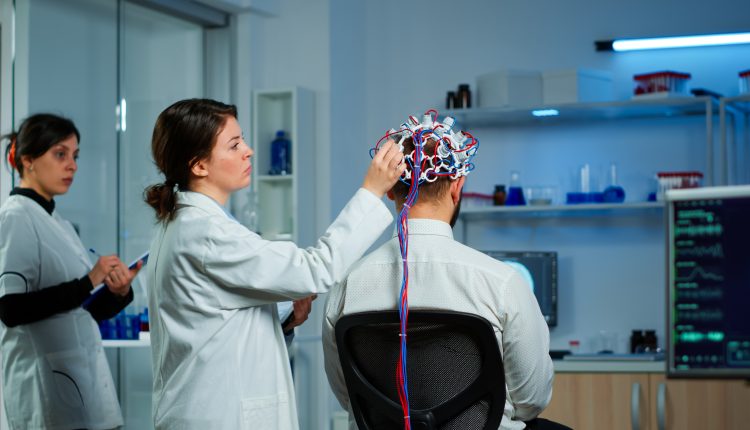My Experience with CES Cranial Electrotherapy Stimulation
Cranial Electrotherapy Stimulation (CES): Exploring the Effects on Anxiety, Depression, Insomnia, and Pain

Introduction
In recent years, cranial electrotherapy stimulation (CES) has gained attention as a potential treatment option for various mental health conditions and physical ailments. CES involves the application of low-level electrical stimulation to the brain through electrodes placed on the scalp. This article aims to explore the effects of CES on anxiety, depression, insomnia, and pain based on available research and studies.
Understanding CES
CES is a non-invasive procedure that utilizes mild electrical currents to modulate the electrical activity of the brain. The electrodes are typically placed on the patient’s bilateral earlobes, allowing the electrical currents to pass through the cranial structures and influence brain function. The stimulation is delivered at low frequencies, usually ranging from 0.5 Hz to 100 Hz, with varying intensities.
Anxiety and Depression Treatment
Anxiety and depression are prevalent mental health disorders affecting millions of individuals worldwide. Traditional treatments such as medication and psychotherapy are effective but may not be suitable for everyone. This has led researchers to explore alternative treatment options like CES.
Numerous studies have investigated the effects of CES on anxiety and depression symptoms. A study conducted by Kirsch et al. (2001) examined the impact of CES on patients with anxiety disorders. The results showed a significant reduction in anxiety symptoms among participants who received active CES compared to those in the control group. Similarly, another study by Lopiano et al. (2017) demonstrated a significant improvement in depression symptoms following CES treatment.
Insomnia Management
Insomnia, characterized by difficulty falling asleep or staying asleep, can have a profound impact on an individual’s overall well-being. CES has shown promise as a potential treatment for insomnia by regulating sleep patterns and improving sleep quality.
Research studies have demonstrated positive outcomes for insomnia patients treated with CES. A study published in the Journal of Psychiatry and Neuroscience (2004) investigated the effects of CES on patients with primary insomnia. The results indicated significant improvements in sleep duration, sleep latency, and overall sleep quality following CES administration.
Pain Relief
Chronic pain is a debilitating condition that affects millions of individuals, often impacting their quality of life. CES has been studied as an adjunctive treatment for chronic pain management, providing a non-pharmacological option for pain relief.
Several clinical trials have examined the efficacy of CES in reducing pain. For instance, a study by Lichtbroun et al. (2001) investigated CES in patients with fibromyalgia, a disorder characterized by widespread musculoskeletal pain. The results demonstrated a significant reduction in pain intensity and an improvement in overall well-being among the CES group compared to the control group.
Mechanisms of Action
The exact mechanisms through which CES exerts its effects on the brain and body are not yet fully understood. However, researchers have proposed several potential mechanisms based on available evidence.
CES is believed to modulate the activity of various brain regions and neural networks involved in mood regulation, pain perception, and sleep-wake cycles. Functional connectivity studies using electroencephalographic (EEG) and functional magnetic resonance imaging (fMRI) techniques have revealed changes in brain wave patterns and neural activity following CES treatment.
CES may also influence the release and balance of neurotransmitters, such as serotonin, in the brain. Serotonin plays a crucial role in mood regulation, and CES-induced changes in serotonin levels could contribute to the observed improvements in anxiety and depression symptoms.
Safety and Side Effects
CES is generally considered safe when used as directed. The U.S. Food and Drug Administration (FDA) has classified CES devices as Class II medical devices, meaning they pose minimal risk to users. However, it is essential to follow the instructions provided by the manufacturer and consult with a healthcare professional before beginning CES treatment.
While CES is generally well-tolerated, some individuals may experience mild side effects such as skin irritation at the electrode sites or transient dizziness. These side effects are usually temporary and subside once the stimulation session ends.
Conclusion
Cranial electrotherapy stimulation (CES) is a non-invasive treatment modality that has shown promise in alleviating symptoms associated with anxiety, depression, insomnia, and pain. Research studies have demonstrated positive outcomes, with significant reductions in symptoms and improvements in overall well-being among CES-treated patients.
Despite the promising findings, it is important to note that CES should not replace traditional therapies but rather be considered as an adjunctive treatment option. Further research is needed to explore the long-term effects, optimal stimulation parameters, and potential mechanisms of action underlying CES.
As with any medical intervention, it is recommended to consult with a healthcare professional before considering CES treatment. By utilizing available research and consulting reputable sources like PubMed, Google Scholar, and relevant journal articles, individuals can make informed decisions regarding CES therapy for their specific conditions.


Comments are closed.